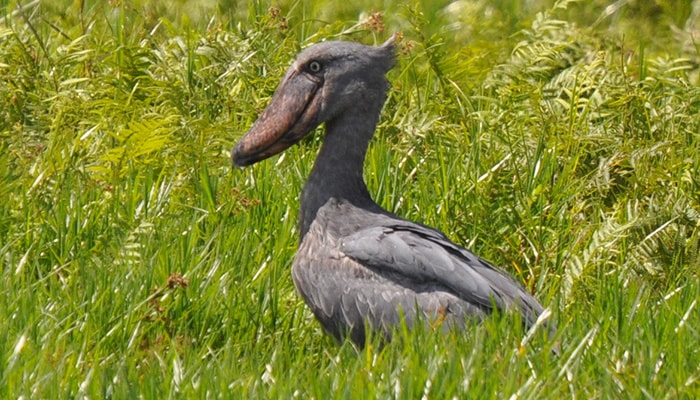1 Day Mabamba Birding Tour
Enjoy a 1 day Mabamba Birding tour Watching in Uganda and have a chance to see the shoebill stork at a closer range as you take a canoe ride in the swamp.
 Mabamba Bay Wetland is one of the birding spots in Uganda for amazing bird watching safaris. Compared to other tourist destinations in Uganda which are somehow distant from the City, Mabamba Swamp, which is a famous habitat for the Shoebill Stork, is just a short drive from Entebbe or Kampala, the Capital City of Uganda. Mabamba Bay is found in Kasanje Sub-county in Wakiso District, about 50 kilometres southwest of Kampala.
Mabamba Bay Wetland is one of the birding spots in Uganda for amazing bird watching safaris. Compared to other tourist destinations in Uganda which are somehow distant from the City, Mabamba Swamp, which is a famous habitat for the Shoebill Stork, is just a short drive from Entebbe or Kampala, the Capital City of Uganda. Mabamba Bay is found in Kasanje Sub-county in Wakiso District, about 50 kilometres southwest of Kampala.
A Full Trip Itinerary for Mabamba Swamp Shoebill Birding Excursion
To visit the birding swamp, you are picked up from Kampala or Entebbe and transfer to the swamp. The site is the most reachable for spotting the wild species of Shoebill Stork in the whole world. The Birding expedition is done on the canoes in swampland channels. These large wetlands are home to a biological unit of birds, animals, bugs, fish, that are not found somewhere else. The Shoe-bill stork is part of that ecosystem, desiring the lonesomeness in the wetland.
A canoe voyage through the papyrus swamp in Mabamba bay will take you to an undamaged attraction of the swamp, where you will have the uppermost chance of seeing Shoebill and other wetland specialist birds including the Saddle-billed Stork, African Jacana, Malachite Kingfisher and other swamp subjects or dwellers. Mabamba journey will offer you a chance to make accustomed to one of Uganda’s stunning swamps.
In the afternoon after bird watching using a canoe ride, you will be transferred back to either Kampala or Entebbe.
About the Shoebill
The shoebill (Balaeniceps rex) also commonly known as whale-head, is a large stork-like bird. It gets its name from its large shoe-shaped bill. It has a seemingly stork-like overall form and has in the past been classified with the storks in the order Ciconiiformes based on this kind of morphology. However, genetic evidence places it with the Pelecaniformes. The adult stork is largely grey whereas the juveniles are more brown. The bird lives in tropical east Africa in large swamps from Sudan to Zambia.

